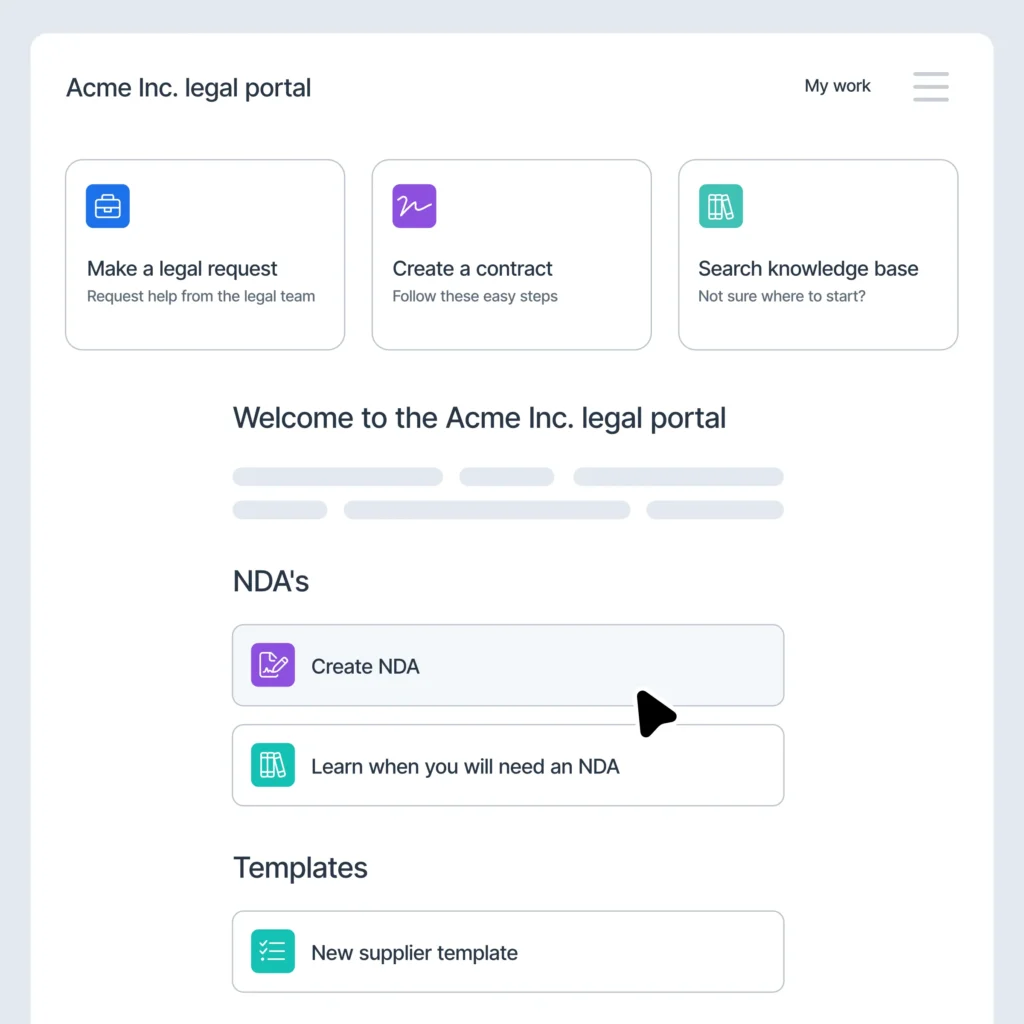What are the benefits of investing in an in-house legal document management system? (From a business perspective)

For in-house legal teams, documents are the lifeblood of the function. Contracts, compliance records, policies, advice memos – almost everything a legal team touches revolves around documentation and emails – a critical source of context and legal record. And the problem grows exponentially.
Yet too often, these documents and emails are scattered across various inboxes, shared drives, and disconnected point solutions.
The result? Hours wasted searching, duplicated work, missed obligations, and a credibility gap with the business.
Improving document management isn’t just about making legal’s life easier. It has a direct business impact – on efficiency, compliance, cost, and even the way legal is perceived as a strategic partner.
Here, we break down the business benefits of modern legal document management and explain why the shift from scattered systems to strategic management is critical.
What is legal document management? (Quick recap)
Legal document management is the practice of securely storing, organizing, and accessing legal documents in a centralized system that supports search, version control, and collaboration. It also extends to managing emails and attachments, ensuring critical correspondence is captured, contextualized, and accessible alongside the documents they relate to.
Where generic file storage tools (like SharePoint or Google Drive) focus on documents in isolation, modern legal document management links them to the matters, contracts, emails. and workflows they belong to. This contextual approach unlocks significant business value.
The cost of poor document management
Before looking at the benefits, it’s worth understanding the risks of doing nothing. Poor document management:
- Wastes time: legal teams spend up to 1.7 hours per day searching emails or other systems (e.g.; matter history, outside counsel advice)*.
- Increases risk: acting on outdated documents can expose the business to compliance failures or litigation.
- Adds costs: outside counsel often re-draft or re-discover documents that already exist internally.
- Frustrates business users: slow turnaround damages legal’s credibility.
The impact is clear: inefficient document practices aren’t just a legal headache – they’re a business liability.
The business benefits of modern legal document management
1. Increased efficiency and productivity
When documents and emails are centralized and searchable, lawyers no longer waste hours digging through email chains or folders. With metadata and AI-powered search, the right file can be retrieved instantly.
Business impact:
- Faster contract cycles → revenue recognized sooner
- Legal teams spend more time on strategic work → higher-value output
- Reduced “shadow work” and duplication
2. Stronger risk and compliance management
Legal teams are guardians of risk. Poor document visibility undermines that responsibility.
With modern document management:
- Version control ensures the business always uses the latest terms and templates
- Audit trails make regulatory compliance easier
- Obligations and renewal dates are visible and trackable
- Business continuity is guaranteed. Everyone in the team can access the right documents, emails, and history – even if staff change, workloads shift, or outside counsel transitions
- Business impact: lower regulatory risk, fewer missed deadlines, stronger audit readiness, happier legal team
3. Cost control and reduced outside counsel spend
When legal teams can’t find documents internally, they often ask outside counsel to re-create them. That adds unnecessary cost.
With a centralized system:
- Internal teams reuse precedents and templates
- Invoices from law firms can be matched against existing work
- Data on document volume and type informs smarter resourcing decisions
- More predictable legal budgets and better ROI on external providers
“Legal inefficiencies force organizations to outsource one-sixth (17%) of their legal work unnecessarily. This equates to US$310,000 potential savings annually per organization.” – IDC
4. Better collaboration between legal and the business
Self-service and transparency are business priorities. Document management supports both.
- Business users can access approved templates and FAQs without waiting for legal
- Legal can share documents securely with stakeholders, tracking who accessed them
- Workflows ensure the right people are looped in at the right time
Business impact: faster decision-making, less friction, and a shift in perception – legal is a partner, not a bottleneck.

5. Data-driven insights and reporting
Documents contain critical data: contract values, obligations, and collaboration patterns. When captured in a modern system, this data can be analyzed and reported on.
- Legal can show cycle times, volumes, and workloads
- Leadership gains visibility into risk exposure and resourcing needs
- Insights guide smarter decisions about staffing, budget, and operational improvements
Business impact: legal is no longer a “black box” – it becomes a data-driven function aligned with the business.
Document management in context: why integration matters
Document management in isolation solves part of the problem. But when integrated with matter management, the benefits multiply:
- Contextualized documents: every file and email tied to a matter, contract, or workflow
- Smarter search: search by matter type, business unit, or deadline – not just file name
- More powerful reporting: combine document data with matter outcomes for deeper insights
- Seamless user experience: one system of record, not multiple silos.
Consolidated platforms like the LawVu Legal workspace deliver this integration, giving legal teams a single source of truth for all their work.
Seamless integrations mean less friction. When your document management system connects directly with everyday tools like Outlook, Gmail, Word, SharePoint, and Google Drive, documents and emails can be captured, filed, and managed without breaking the team’s flow of work.
This reduces manual steps, prevents information from getting lost in silos, and saves valuable time, meaning legal spends less energy on admin and more on delivering value to the business. This should be a requirement of your matter management and document management solution.
Tip: Use this integrated legal tech features checklist to assess the integrations and requirements best suited to your legal team.
The return on investment (ROI) of better document management
Legal leaders are under pressure to prove value and operate efficiently.
Document management delivers measurable returns:
- Time savings: less wasted searching and more automated workflows = more productive hours
- Cost avoidance: reduced rework and outside counsel duplication as well as self-service and automation that offloads legal work and speed up time to value
- Risk reduction: fewer compliance failures, missed renewals, or version errors
- Improved perception: faster turnaround and transparency strengthen legal’s role as a trusted business partner
In fact, many teams find the efficiency gains alone offset the investment in a modern document management solution – with risk and collaboration benefits as added value.
The future: from storage to insights
The next stage in legal document management isn’t about better filing – it’s about intelligence.
With AI-enabled search and analysis, document systems are evolving into insight engines that:
- Identify risks hidden in contract language
- Flag obligations linked to specific matters
- Recommend templates based on past usage
- Predict workload trends based on document volume
For legal teams, this shift transforms documents from static files into strategic assets.
Better document management isn’t optional, it’s essential
Document management is no longer just an administrative function. For in-house legal teams, it’s a strategic capability with measurable business impact.
By reducing wasted time, lowering risk, controlling costs, improving collaboration, and unlocking insights, modern document management helps legal teams scale with the business – and prove their value as more than just “the department of no.”.
And when integrated with matter management, document management becomes more than storage. It becomes the foundation of a legal system of record.
For teams ready to reduce document chaos and shift from firefighting to strategy, the message is clear: better document management isn’t optional, it’s essential.
If you’re ready to take action, start by learning more about document management in the LawVu legal workspace. Capture, search, and share institutional knowledge with AI-powered indexing and search – so answers are always at your team’s fingertips.
